Part 1: The founding of an ass-kicking nation
Let's not waste too much time and get into the basics, shall we?There are four civilizations that have some assistance with regards to religion. Ethiopia, the Mayans, the Byzantine Empire and the Celts. This time we are playing as the Celts, and this is why:
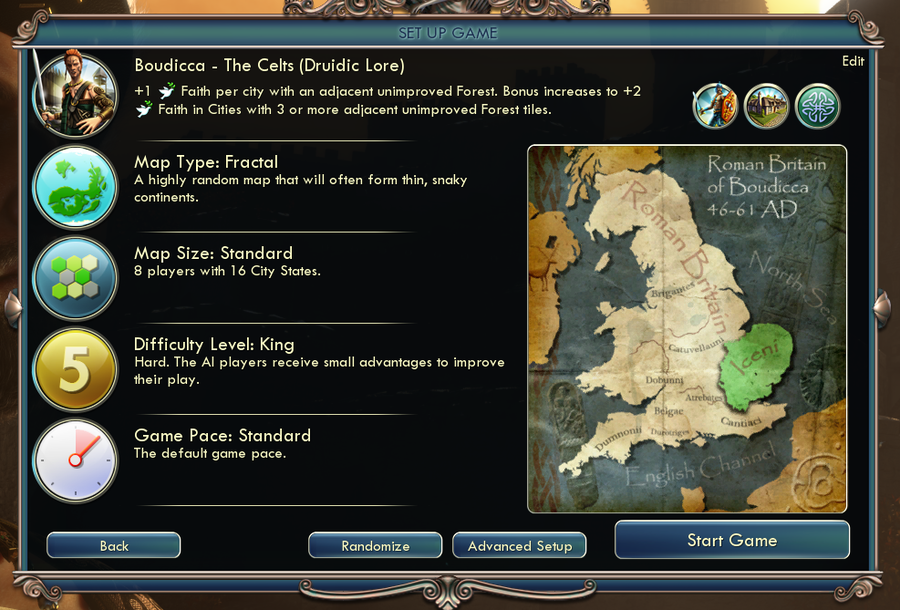
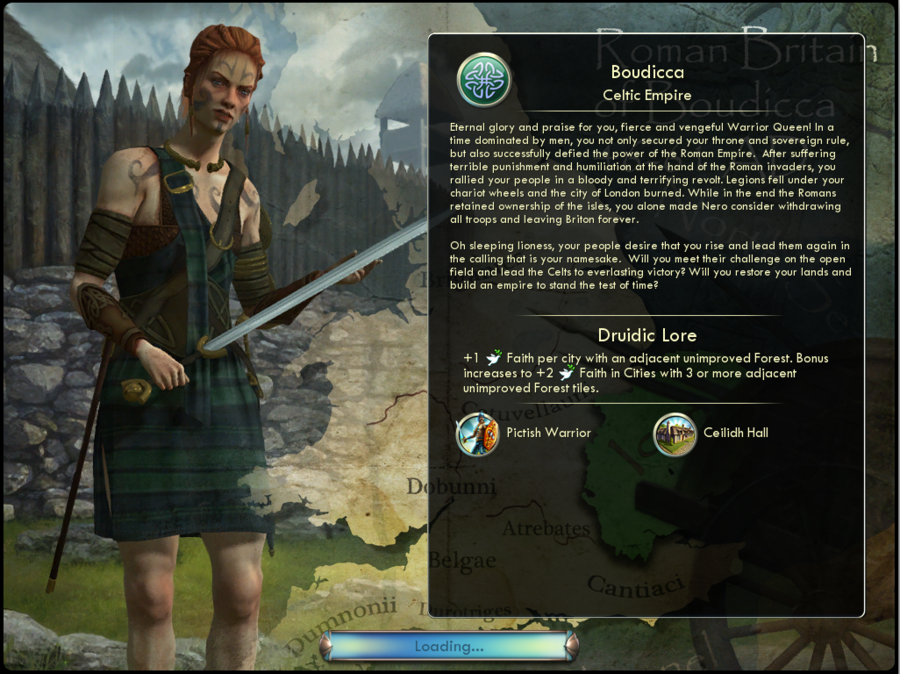
"What's faith points?" you may ask. Well, they are what you need to generate in order to even have a religion in the first place. If you don't bother to get them, you don't get to start your own religion (though you can still benefit if some other civ spreads their religion to yours, more on that later).
Religions tend to be "first-come, first serve" with regards to the benefits you can get from them. The thing is, generally, you need to build a building of some sort to generate faith in the first place, but Boudicca of the Celts can, if she plunks down her city next to a virgin forest, start generating faith on turn one. Playing as the Celts guarantees we get first pick of the beliefs.

Here we are. We've got one Warrior (the weakest combat unit in the game, not much more than a group of cavemen with clubs) and one Settler (a non-combat unit that founds cities). We're in the middle of some grassy plains, on a mountain, next to a river, with some spices and cotton nearby. Not too shabby.
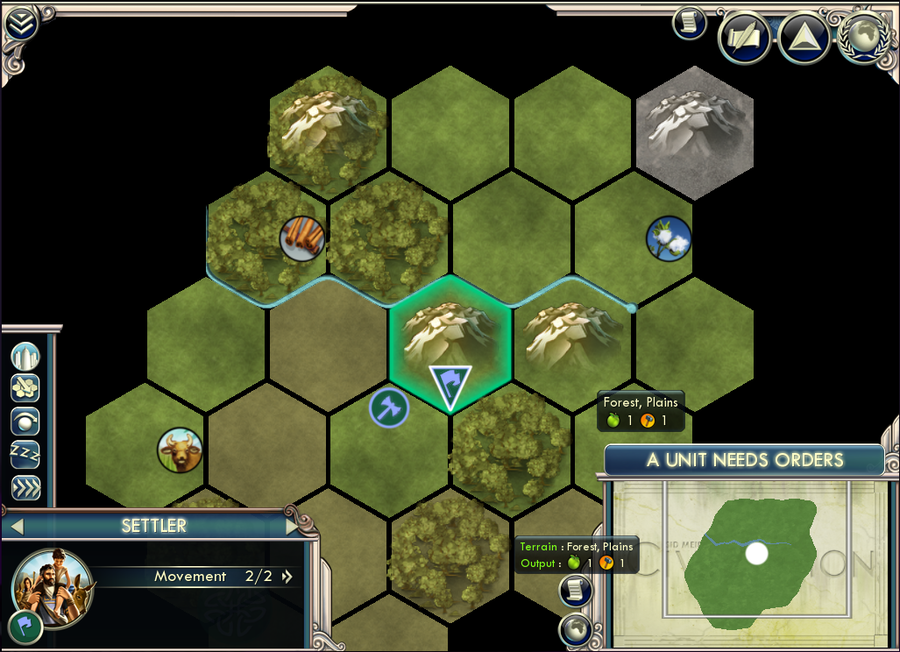
Here's what things look like in Strategic View. I love strategic view, everything is much easier to pick out, you can tell where the hills begin and end quite clearly. The only problem is it just doesn't look as "pretty". I'll be alternating between view types to show off stuff.
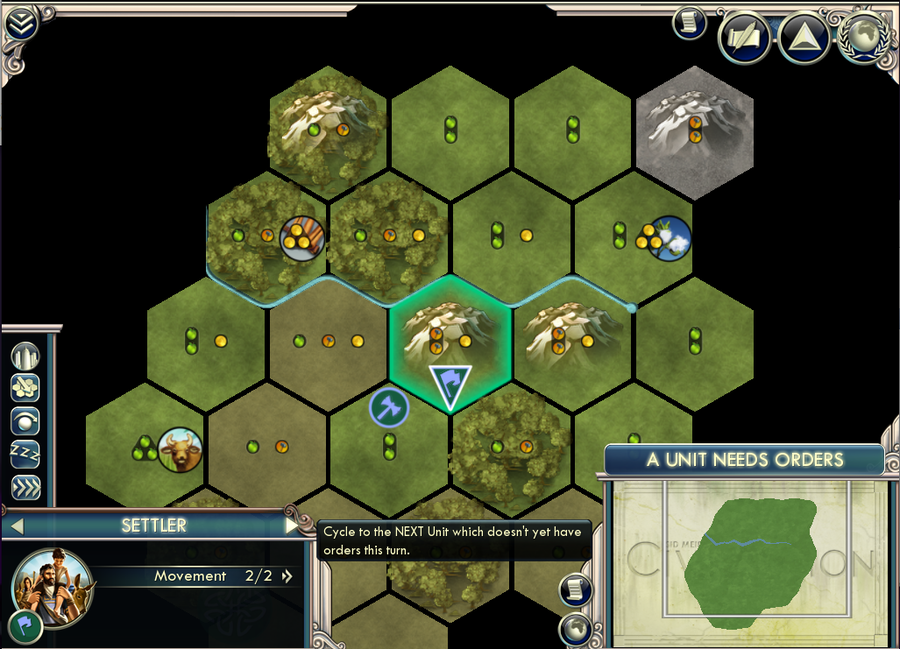
Here's a breakdown of terrain types: brownish "Plains" give one Food (makes your cities grow) and one Production (the hammer, lets you build stuff) per turn. Green Grasslands give us more food but less production (except for the hills). That gray tundra only gives us one food per turn, and all Hills give us no food but 2 production per turn. The gold icons only exist next to rivers and other bodies of water, or resources like the spices and cotton. This is one of the reasons why settling next to a river is good, plus it gives your city a defense from that side (as does settling on a hill).
We're right next to a bunch of forests too, remember, we want to be next to at least one virgin forest for a while. It'd be even better if we could find a place with three forest next to it just so we could generate even more faith points, but it looks like we'll just have to take what we can get.
So, I command my settler to just build a city right where he's standing. This uses him up and a bunch of little buildings pop out in a cloud of dust.
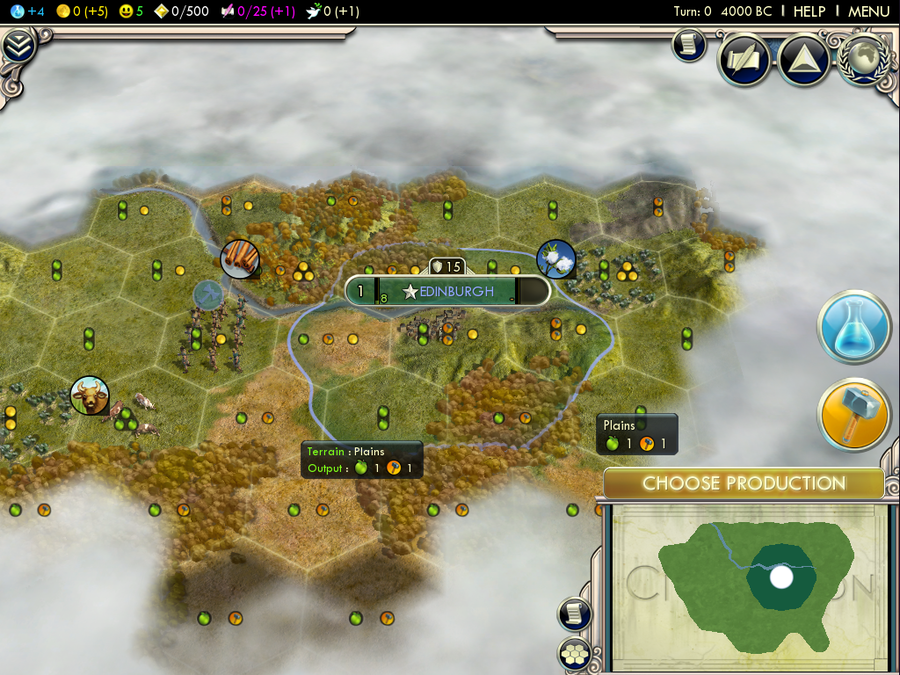
And here it is, the little town of Edinburgh. The interface at the top of the screen pops open now that we have a city and a proper civilization going. From the left: the blue dot that says +4 is Science per turn (the higher this number, the better!) the gold icon says we have 0 gold and are going to get +5 per turn. The happy face is how much happiness we have. It goes down by 3 for each city we found and by 1 for each citizen we have--as we grow we will need to increase our happiness lest our civ become a huge stagnant slum.
The yellow diamond next to Happiness is our Golden Age meter. Excess happiness above 0 gets added to that meter per turn, once it fills up we get a Golden Age where good things happen (more on that later.) The purple meter is Culture. Culture is generated by buildings within cities and is used to purchase social upgrades for our civilization, and to expand the borders around cities that we control.
The white number with the bird with the olive branch is Faith. We are already getting one faith per turn since we're next to a forest. Every other civ in the game will have to wait ten to twenty turns before they can even think about getting some faith, we are already ahead of the curve there.
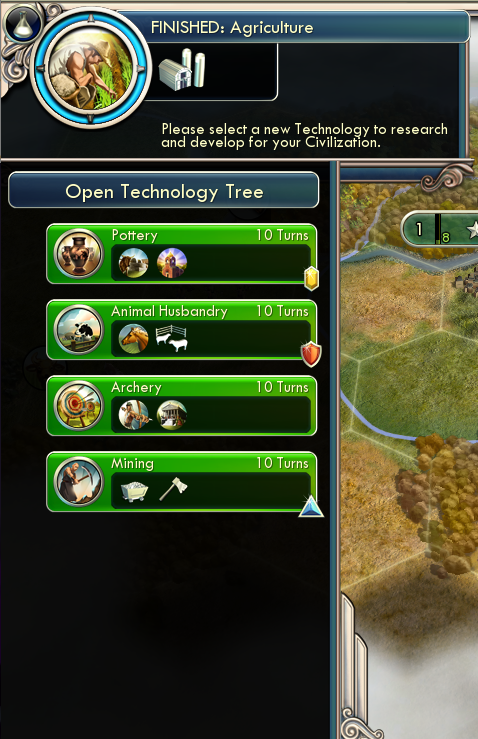
It says "Finished: Agriculture" because Agriculture is the basis of all civilization, it's a tech everyone starts with.
These are the four technologies we can research at the moment. Research points are accumulated by population in this game (previous Civ games had lab research being funded by gold taxes). We'll want all of them, but right now we're going for Pottery because it unlocks the Shrine, the first Faith-generating building.
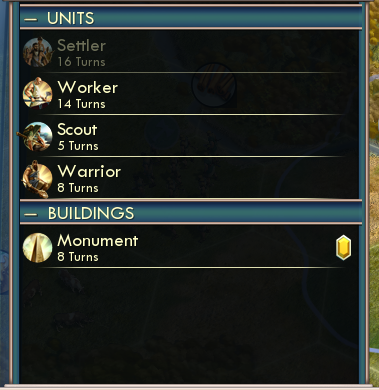
These are the things we are capable of building. Warriors are our basic caveman combat unit. Settlers make new cities. Workers work tiles to build farms and things on them, chop down forests (no!) and the like. Scouts are weak but travel unimpeded over terrain so they can scout out what's around our city and make that fog of war disappear. The Monument is our basic Culture generating structure, we want to build that soon, but first things first: get a scout out survey our dominion.
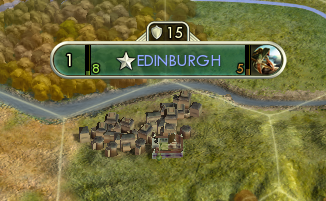
This is the city closeup. The big (1) is the population of the city. The green 8 is how many turns we need before it grows in population, based on food intake. The star means it's our capital, the shield is the combat strength of the city, and on the right we can see our scout and how many turns he'll take to build.
Ten turns from now Pottery will be researched, our scout will be up and running around, and we'll know if we have any neighbors to befriend or destroy. I'll cut down on the Civilization For Dummies explanation as we go. Tune in next time!